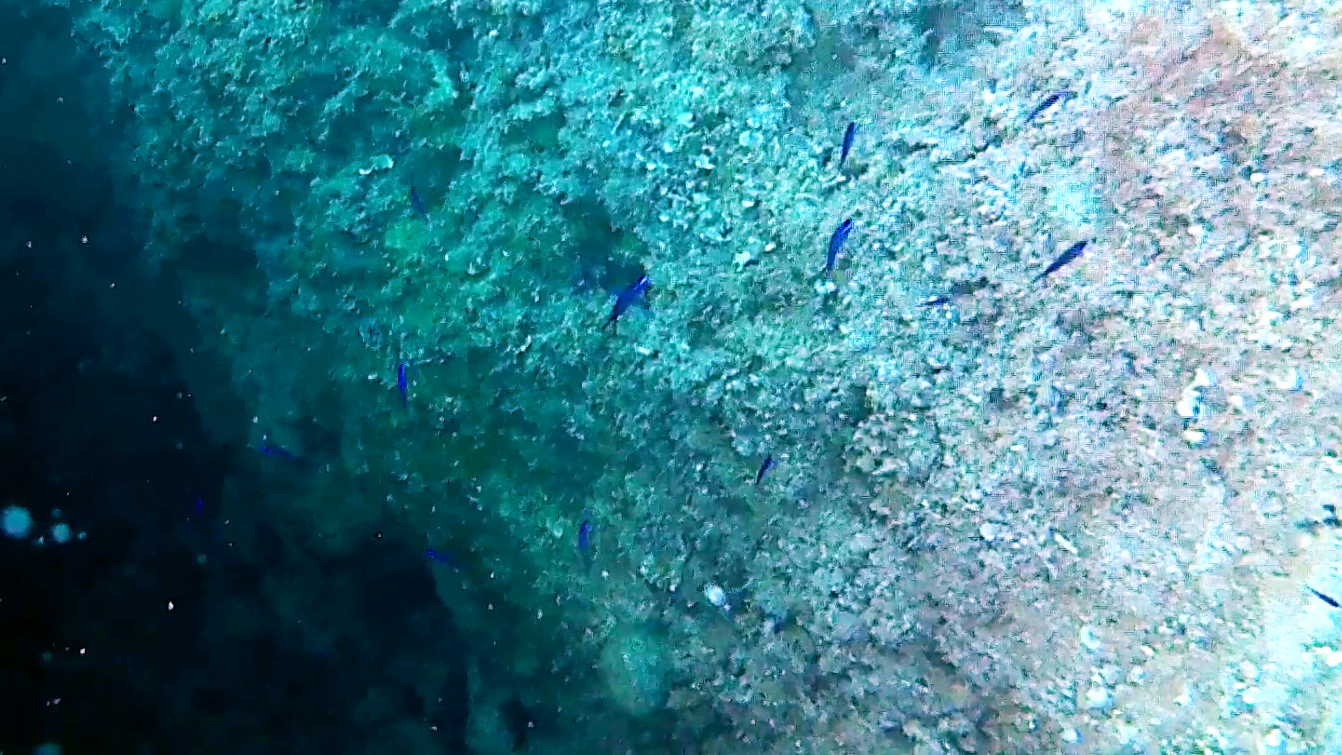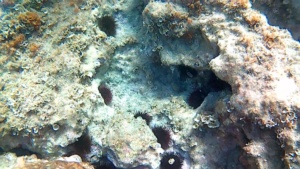As always in the summers, looking at the holes in the mouths of the rocky shores of the Mediterranean, is very common to meet “Blue Damselfishes“. They are chromis chromis, Black Castagnola. The small specimens during this period have electric blue livery and are photophobes, often encountered in caves, crevices and other shaded environments. Castagnole Blu – Chromis chromis – IntotheBlue.it
Chromis-chromis, the damselfish or Mediterranean chromis, (belongs to the order Perciformes, suborder Percoidei) is a small species of ray-finned fish of the family Pomacentridae from the Eastern Atlantic and Mediterranean.
Chromis chromis has an oval and laterally compressed body with an noticeably large eye. Its mouth is strongly protractile, reaching to below the centre of the eye, with small canine-like teeth set in 3 rows on the jaws. The preoperculum is not serrated and the anterior gill arch has 30 slender gill rakers. There are 13-14 spines and 10-11 soft rays in the dorsal fin and in the anal fin has 11 spines and 10-12 soft rays. Its body is covered in large scales, including the head, and there are 24-30 scales along the lateral line.
The youngest fish are a brilliant iridescent blue in colour; older juveniles have blue stripes with the dorsal and anal fins outlined in blue while the adults are dark brown with the centres of each scale a paler golden brown or grey-brow and with the edge of the caudal fin lacking any colour, especially in the centre of the fork. The males become a vivid pale violet. There is a single pair of nostrils.
It can grow up to a size of 25 centimetres in length, with a common length of 13 centimetres.
Chromis chromis inhabits littoral, mainly in rocky areas from 2 to 40 metres in depth, in small shoals in midwater above or near rocky reefs and above sea-grass meadows.
In This movie we show you the youthful and the adult phase of the damselfish. Castagnole Blu – Chromis chromis – IntotheBlue.it
(extract from Wikipedia)
 English
English Italiano
Italiano








